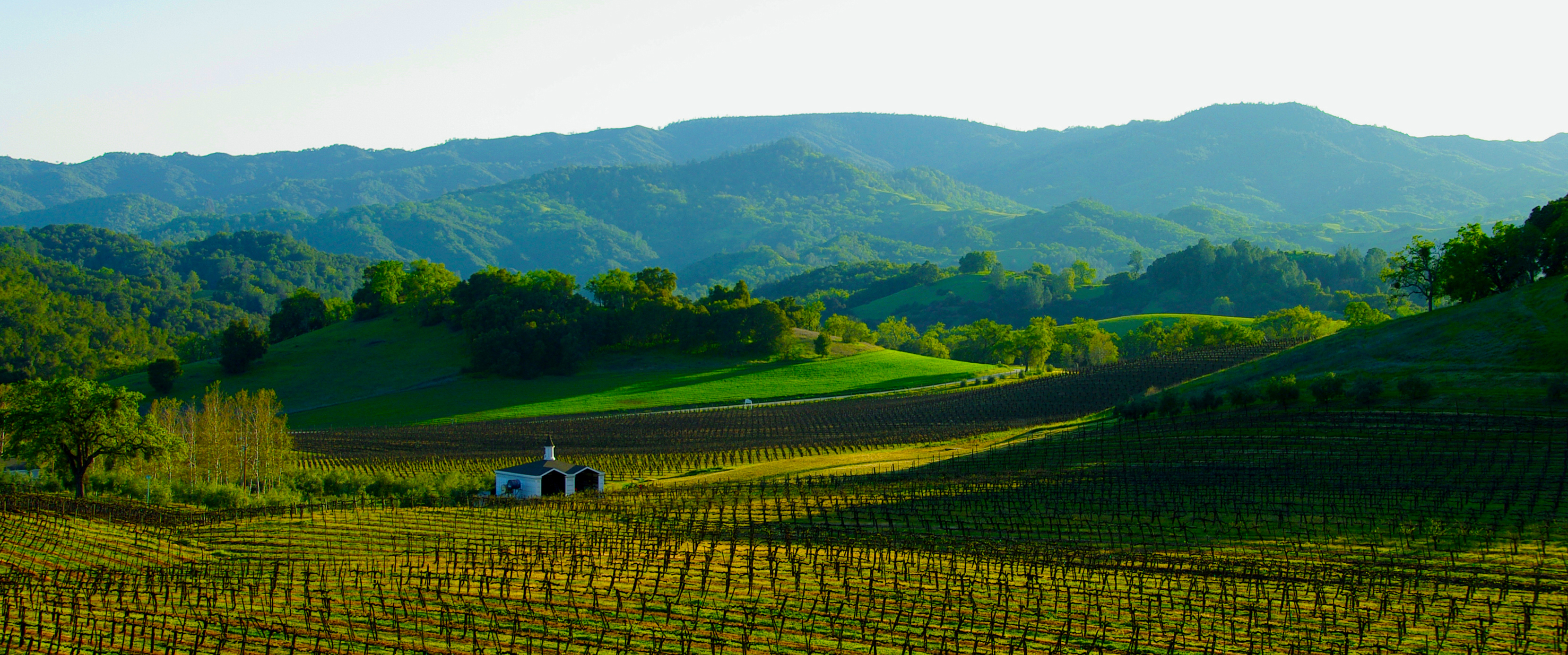The vineyard of three volcanoes is the exemplar of sustainability perfection. Never applied a petro-chemical fertilizer or so-called natural fertilizer to the soils nor ever needed. No application of toxic fungicides required.
The longest growing season in the world guaranteeing more layered, natural flavors. The north-south slopes display an array of microclimate changes from hilltop to bottom.
The greatest recorded range of diurnal temperature assuring optimum net photosynthesis. Remarkable 50-degree temperature swings day to night during growing season. Photosynthesis is enhanced as the vineyards flourish in high elevations — another proven grape growing superlative as opposed to flat valley areas. Because of these record temperature swings essential for quality grapes, Carmody McKnight, on 24-hour daily average, lies in one of the coolest regions in California.
The vineyards experience the lowest relative humidity, a meteorological marvel and, anomalously, bordering a cold ocean. This extremely favorable characteristic significantly minimizes fungicide dependability which seriously plagues most of the major grape-growing regions, let alone our health. According to a University of California study, Paso Robles Westside enjoys more sun days than any area in California or France. This is why in its over 35-year history, Carmody McKnight has never applied one fungicide to the vines.
Perfect topography. The grapes of Carmody McKnight nourish in hillside vineyards — a must factor for exceptional vineyards and wines — notably the Grand Cru vineyards of France. With knowledge gained from centuries there was no renowned vineyard grown in a valley floor. Undulating to moderately steep terrain creates the supreme vineyard sites as they combine ideal drainage with greater intensity of sunlight. When grapes are planted on valley floors and bottom lands, they are also subject to a microclimatic phenomenon called cold air drainage that often severely damages vine plants with early vine killing frost.
Valley microclimates create other troubles inherent to a valley floor — excessive uncontrollable wind and flooding. It was both these factors that partly enabled Phylloxera to destroy most all the vines in the world. Planted without vineyard-block interruptions with dense, back to back vines contributed to Phylloxera spreading destructively.
Carmody McKnight lies prominently in the Premium Wine Growing Area of the United States, if not the world. It is all best summed up by Brent Hallock, an esteemed professor and renowned climatologist from Cal Poly University in San Luis Obispo. Professor Hallock explained that with the reevaluation of grape-growing regions in light of global warming, the consensus of earth and climate scientists is that the immediate area of the Carmody McKnight vineyards in the Westside of Paso Robles is the only Premium Wine Growing region and Mediterranean Climate now in California, all the United States and most of Europe.
According to the projections quality premium wine grapes as far as California is concerned could only be grown in a thin strip of land along the coast (mainly Central Coast) of California. The band lies about 10 to 12 miles inland from the Pacific. Carmody McKnight in the Westside of Paso Robles is one of the closest vineyards to the Pacific, approximately 7 miles, but interestingly not adversely affected by the proximity with downsides such as excessive fog and moisture and limited sunlight.






